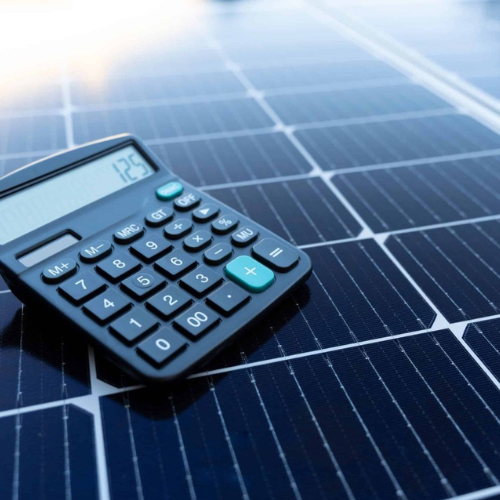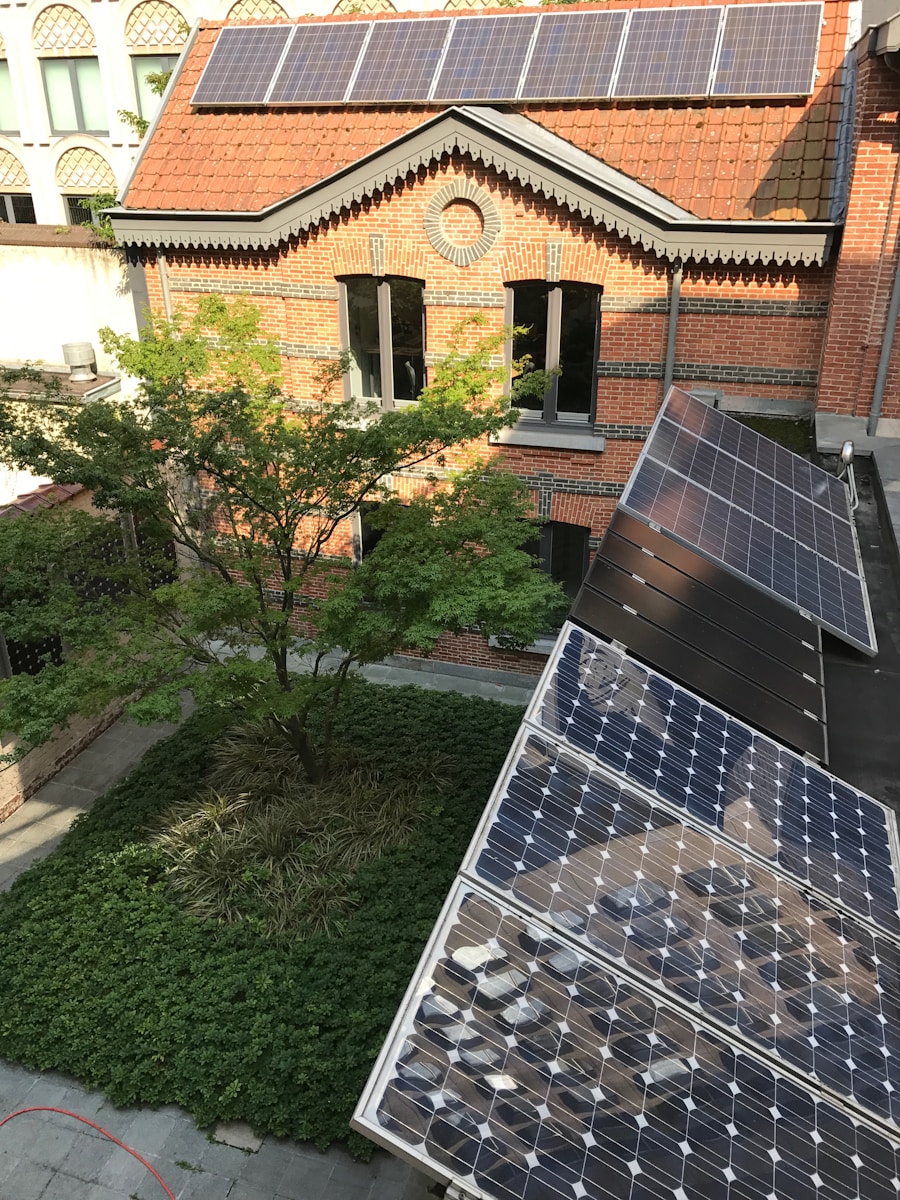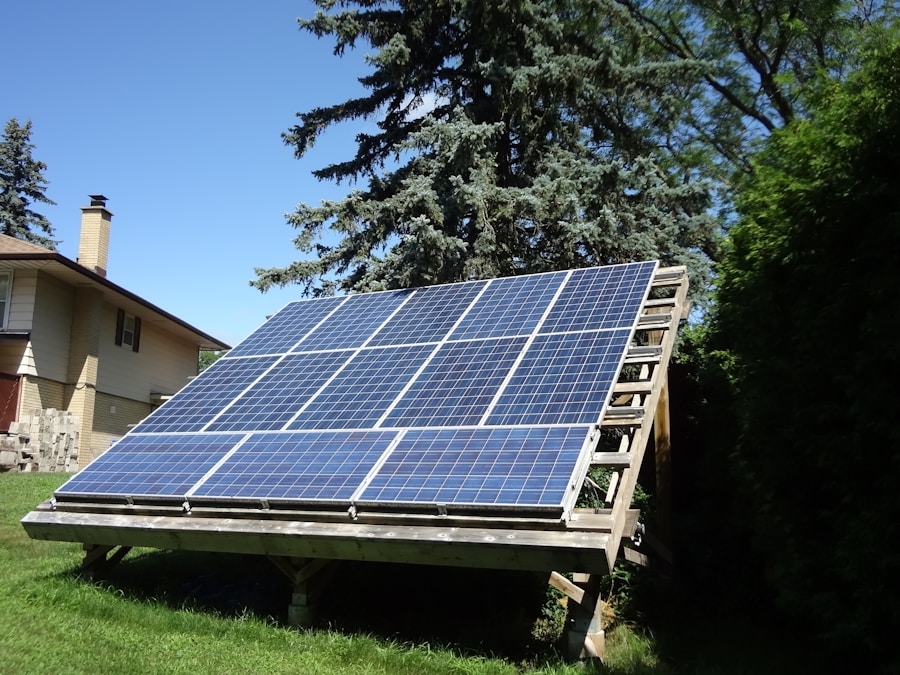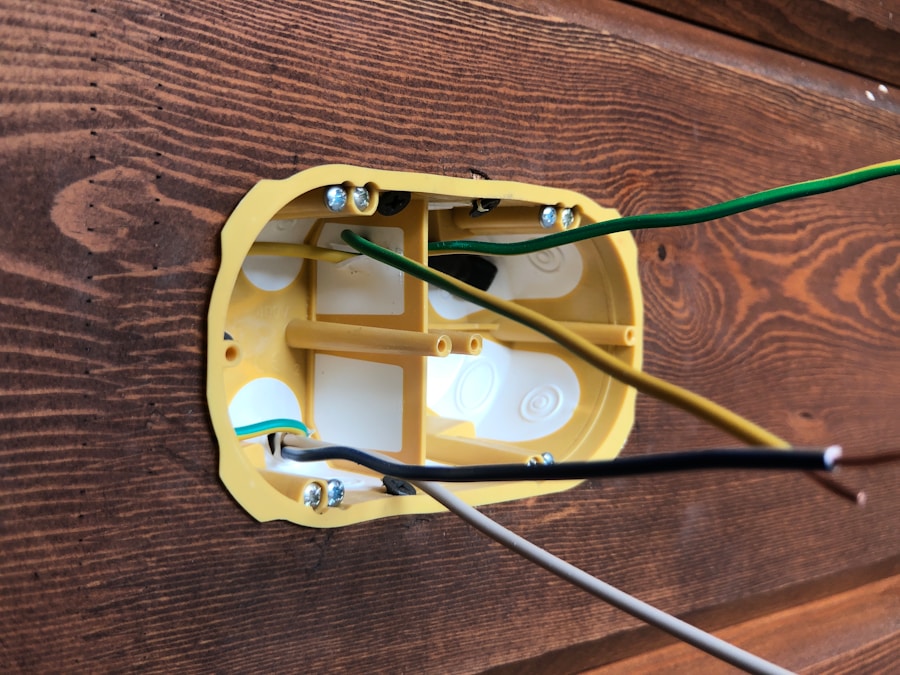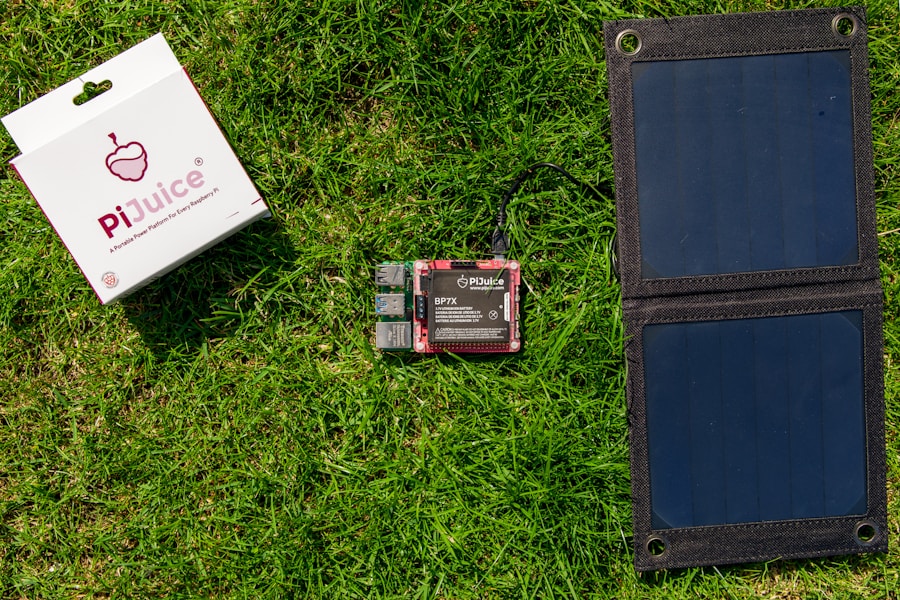Contents
- 1 Understanding the Financial Benefits of Solar Energy
- 2 Financial Benefits of Solar Energy
- 3 Environmental Benefits of Solar Energy
- 4 How to Incorporate Solar Energy into Your Home
- 5 Strategies for Maximizing Solar Savings
- 6 Frequently Asked Questions
- 6.1 What are solar savings and how do they benefit me?
- 6.2 How does solar energy help the environment?
- 6.3 Is installing solar panels expensive?
- 6.4 What is the process of switching to solar energy?
- 6.5 What are the maintenance requirements for solar panels?
- 6.6 Can I still use electricity from the grid with solar panels?
Understanding the Financial Benefits of Solar Energy
The financial benefits of solar energy are substantial and come in various forms, highlighting the advantages of solar power.
Solar energy isn’t just a passing trend; it’s a smart choice that brings you some serious financial benefits and environmental benefits, especially as a form of clean energy.
When you embrace solar energy, you can enjoy substantial cost savings, impressive returns on your solar power investment, and take advantage of the green technology that solar panels offer. Plus, you should definitely check out the tax incentives and rebates available that make making the switch even more enticing.
Think about the positive impact solar energy can have on your carbon footprint and its important role in tackling climate change as part of the global energy transition. It’s worth learning how to incorporate home solar systems into your residence so you can maximize your electricity savings and pave the way for a brighter, more sustainable future.
What is Solar Savings?
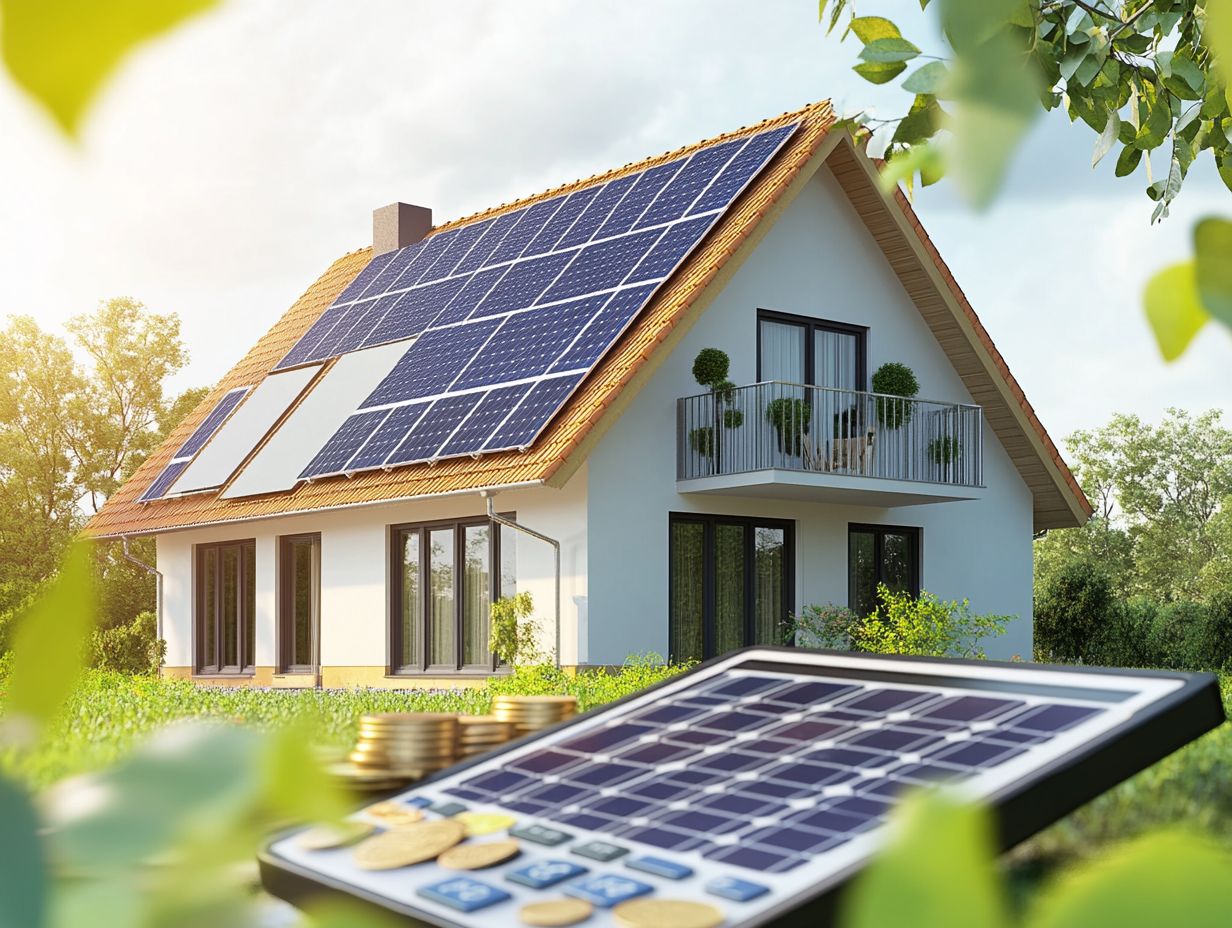
Solar savings are all about the financial benefits and environmental perks you get from tapping into renewable energy, especially when you install solar panels and photovoltaic systems. By embracing solar technology, you can cut down on your energy bills and contribute to energy conservation and sustainability efforts, enhancing your solar return on investment, which is a win for your household budget in the long run.
Not to mention, solar energy systems can lead to significant utility savings and even boost your home’s value, all while promoting energy independence and shrinking your carbon footprint, thanks to smart energy solutions.
When you convert sunlight into usable energy, you’re optimizing energy efficiency and ensuring your home enjoys cleaner air and a more sustainable future with renewable energy. Solar panels capture sunlight and turn it into electricity, powering everything from your everyday appliances to your complex heating systems.
As more people like you invest in solar energy, you can take advantage of various financial incentives, such as tax credits and rebates, which only sweeten the deal for your savings.
This shift not only helps you rely less on traditional fossil fuels but also plays a crucial role in tackling climate change by promoting clean power and sustainable living. So, embracing solar savings is a smart choice for anyone looking to be eco-conscious.
Barbose, G., Darghouth, N., Millstein, D., Spears, M., Wiser, R., Buckley, M., Widiss, R., & Grue, N. (2016). Tracking the Sun: Installed Price Trends for Distributed Photovoltaic Systems in the United States. Lawrence Berkeley National Laboratory. Link
Financial Benefits of Solar Energy
When you think about solar energy, the financial benefits are pretty impressive and come in many forms, thanks to solar power benefits.
You could see immediate cost savings on your energy bills, plus a solid long-term return on your investment through various solar incentives and rebates.
By investing in solar panels and photovoltaic systems, you put yourself in a great spot to take advantage of tax incentives and government subsidies, which can seriously cut down your installation costs. This makes solar a smart and cost-effective choice for energy production, enhancing your solar return on investment.
Plus, with net metering as part of solar policy, you get to earn credits for any excess power you generate, which means you can really maximize your financial returns.
Analyzing Cost Savings and Return on Investment
Cost savings from solar energy primarily come from those reduced energy bills, making it a smart long-term investment that eventually pays for itself through better energy efficiency and less dependence on utility companies. By taking a close look at your energy usage and exploring solar financing options, like solar leasing and solar power purchase agreements, you can figure out how much you could save.
Just don’t forget to include solar maintenance costs and the energy production of your solar energy system in your calculations. This little analysis will help you assess your return on investment and figure out how long it’ll take to hit those full solar savings.
Many homeowners notice a significant drop in their energy costs after installing solar panels, with monthly bills often slashed by 50% or more, demonstrating the electricity savings solar can achieve. For instance, if your average monthly energy bill is $150, it might drop to around $75 after the installation.
The upfront cost of solar systems can vary, but thanks to financing options like solar loans and leasing agreements, that initial investment becomes much more manageable. Plus, tax incentives and rebates can boost your savings even more, helping you recoup your investment in just a few years instead of waiting decades.
Understanding these financial details is key if you’re thinking about making the switch to solar energy, particularly regarding solar growth and renewable energy incentives.
Tax Incentives and Rebates
Tax incentives and government rebates are key to making solar energy a financially smart choice for you as a homeowner. These government subsidies can lead to significant savings, all while promoting solar adoption and enhancing environmental sustainability, contributing to long-term savings.
With various incentives available at both federal and state levels, you can dramatically reduce the upfront costs of solar installation, making it easier for you to switch to renewable energy solutions. It’s essential to understand these incentives so you can maximize your financial benefits from solar energy.
For example, the Federal Investment Tax Credit (ITC) lets you deduct a big chunk of the cost from your federal taxes for solar installation, potentially saving you thousands of dollars. Plus, many states offer their own tax credits, property tax exemptions, and performance-based incentives.
To tap into these benefits, you’ll typically want to work with your solar installation company—they’ll help you navigate the application process and figure out what you’re eligible for.
By fully taking advantage of these incentives, you can boost your energy independence while also contributing to a more sustainable future, all while slashing your energy expenses and enhancing your energy security.
Environmental Benefits of Solar Energy
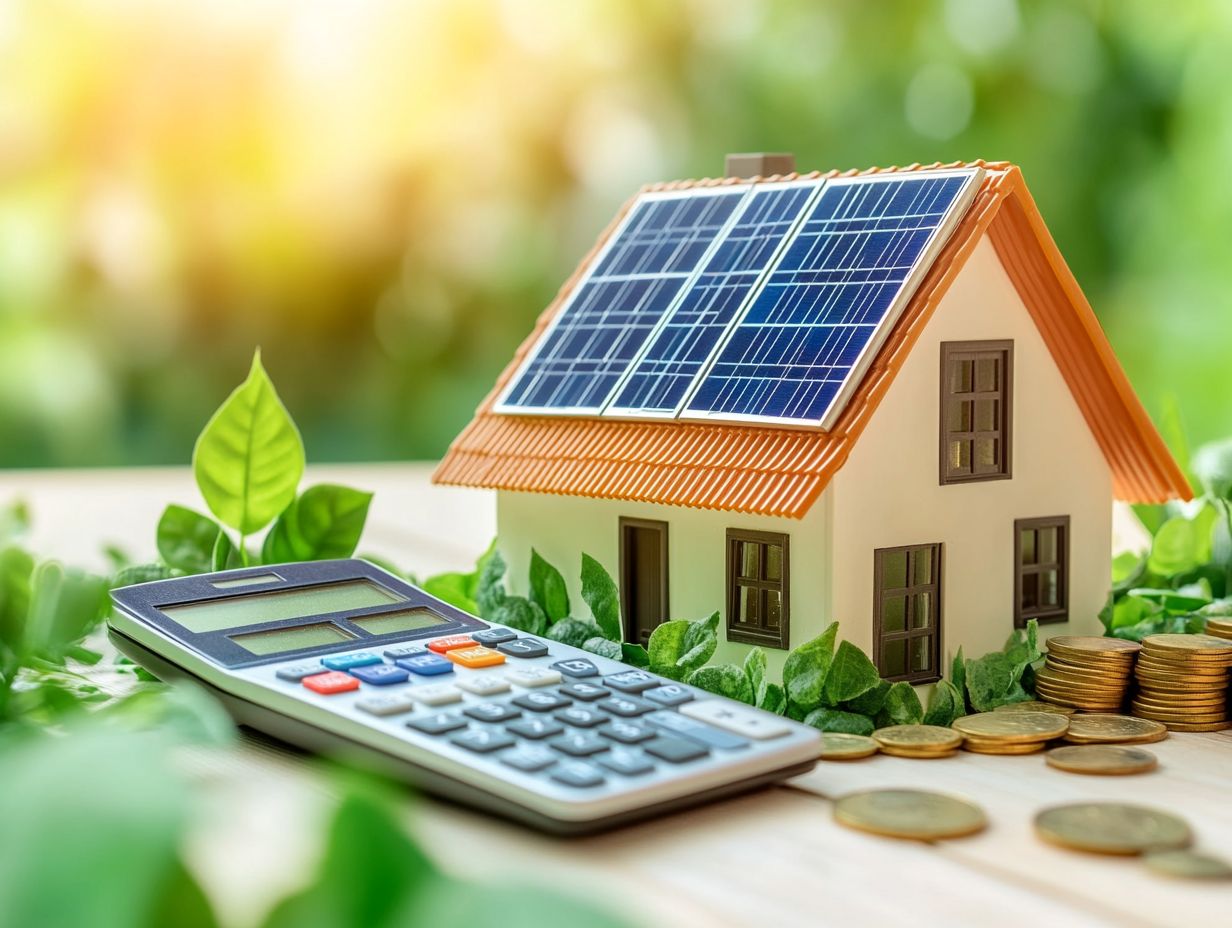
The environmental benefits of solar energy are pretty amazing, showcasing solar technologies as a crucial part of green building. They don’t just impact your household; they also make a huge difference in global sustainability and climate action.
By cutting down on your reliance on fossil fuels, solar energy helps lower greenhouse gas emissions, which means you can reduce your carbon footprint. This shift is crucial for fighting climate change and boosts energy conservation efforts through solar power systems.
Additionally, it promotes a cleaner, eco-friendly environment for generations to come.
Reducing Carbon Footprint
By making the switch to solar power, you can really make a difference in reducing your carbon footprint and tackling the negative effects of climate change through clean energy and renewable resources. Solar energy is a clean energy source that cuts down on pollution and greenhouse gas emissions compared to those traditional fossil fuels.
This change not only helps the environment but also promotes a healthier community and a better planet for everyone, reinforcing eco-friendly values.
In fact, studies show that if more people adopted solar energy, we could reduce carbon dioxide emissions by up to 1.5 billion metric tons every year by 2030. That’s like taking more than 300 million cars off the road! Clearly, solar technology plays a crucial role in hitting our sustainability targets with alternative energy sources.
Plus, using solar energy means fewer air pollutants, which leads to better public health and supports decentralized energy efforts. By relying less on coal and oil, communities can enjoy cleaner air and fewer respiratory issues. This contributes to a more resilient ecosystem, enhancing the quality of life for generations to come.
Impact on Climate Change
The impact of solar energy on climate change is pretty significant, as it is crucial in the global shift toward renewable energy sources. By embracing sustainable living practices that include solar energy systems, you’re helping to reduce reliance on fossil fuels, which is a significant victory in combating climate change.
This collective effort doesn’t just promote energy security; it also reinforces our commitment to environmental sustainability.
As communities wake up to the urgent need for climate action, adopting solar solutions shines as a powerful way to cut down on greenhouse gas emissions. By tapping into the abundant energy from the sun with solar power advantages, you can make a real dent in your carbon footprint, whether you’re an individual or a business.
Investing in solar technology not only helps create a more stable climate but also opens up economic opportunities by generating jobs in the renewable sector.
When you encourage your friends, family, and neighbors to consider solar options through solar community programs, you amplify these benefits and help build a culture of sustainability that extends far beyond your own actions.
How to Incorporate Solar Energy into Your Home
Incorporating solar energy into your home is all about taking a few key steps for energy management.
Start by evaluating your energy usage with an energy audit, then move on to selecting the right solar energy systems that fit your specific needs and budget.
It’s also crucial to understand the installation costs and available solar project financing options, as the solar installation process will help you figure out if going solar is feasible for your household.
By being proactive in this process, you can enjoy some serious long-term savings and do your part for the environment by contributing to solar adoption.
A Comprehensive Overview of Types of Solar Systems
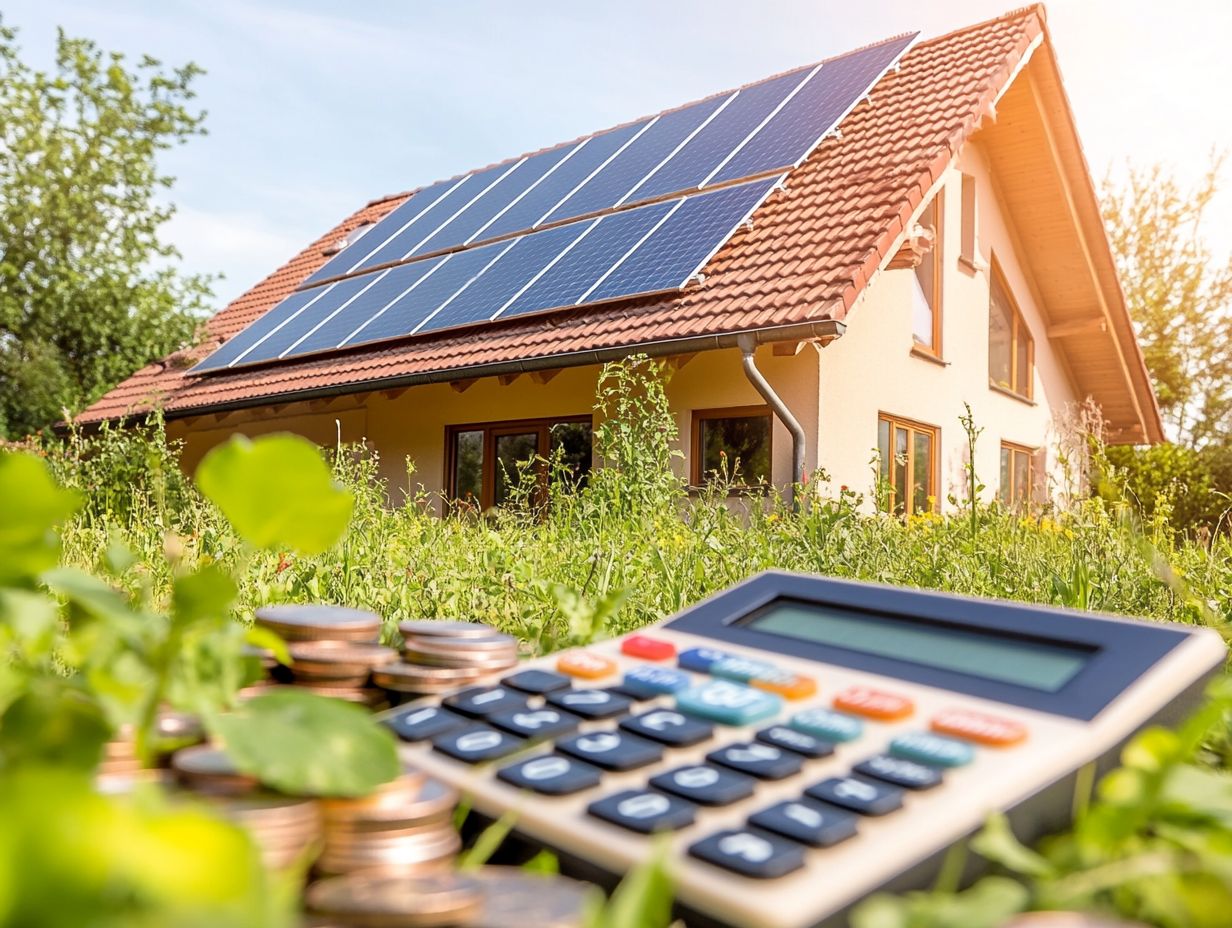
There are several types of solar systems out there, like photovoltaic systems and grid-tied systems, each designed to meet different energy production needs and preferences, including solar capacity considerations. Understanding the differences between these systems can really help you pick the best option for your home, ensuring you get the most energy efficiency and savings on your bills.
Plus, solar energy systems can be tailored to your specific requirements, including energy storage and monitoring capabilities.
For example, while photovoltaic systems convert sunlight directly into electricity, solar thermal systems grab that heat for various uses, like heating water. Grid-tied systems play nicely with the local utility, letting you use solar energy during the day and dip into the grid when necessary, supporting energy alternatives. This makes them perfect for anyone looking for a reliable energy source without the hassle of large storage systems.
On the flip side, off-grid systems give you complete independence from the traditional utility grid, making them great for remote locations.
By taking a good look at your household energy needs and financial goals, you can make informed choices that lead to sustainable living and long-term cost savings. Embracing energy efficiency and renewable energy solutions can further enhance your financial benefits.
Installation Process and Costs
The solar installation process for solar energy systems is a really important phase that requires careful planning and a good understanding of the costs and solar financing options available to you, including solar incentives and tax credits.
Start by conducting an energy audit to figure out your household’s energy needs, then evaluate the solar infrastructure, and finally select a qualified contractor to ensure everything gets installed efficiently. Don’t forget to budget for maintenance costs—it’s key to maximizing the benefits of your solar investment over time.
Once you’ve chosen a contractor, the actual installation usually takes about one to three days, depending on the system size and how complex the setup is. Keep in mind that costs can vary quite a bit based on factors like your location, the system size, and the type of technology you choose.
Financing options such as solar loans, leases, and power purchase agreements (PPAs) can help make going solar more accessible and financially feasible for you.
After installation, regular maintenance—like cleaning your panels and checking the system components—is crucial to avoid performance drops, ensuring your system runs optimally for years to come.
Strategies for Maximizing Solar Savings
Maximizing your solar savings isn’t just about putting in solar energy systems; it’s also about making some energy efficiency and conservation tweaks around your home.
By optimizing how you use energy, you can boost those utility savings and make sure your solar power investment pays off big time, providing substantial electricity savings and environmental benefits.
Simple changes, like upgrading to energy-efficient appliances and tapping into smart grid technology, can really add up and help you save even more on your energy bills, promoting energy conservation and contributing to your solar return on investment.
Tips for Optimal Energy Efficiency
Achieving optimal energy efficiency in your home starts with an in-depth energy audit. This is your chance to pinpoint where you can improve your energy usage and make those necessary efficiency upgrades. Simple steps like sealing leaks, improving insulation, and switching to energy-efficient lighting can lead to some serious savings on your energy bills. When you integrate these energy-saving practices with your solar energy systems, you can really maximize your overall energy savings and contribute to a sustainable future.
Incorporating smart home technology can take your energy efficiency to the next level. Think about using programmable thermostats that let you control the temperature precisely, ensuring your heating and cooling systems only run when needed, thereby maximizing your solar power benefits.
And don’t overlook upgrading outdated appliances! Replacing them with Energy Star-rated models not only cuts down on electricity consumption but also works hand-in-hand with your solar energy usage by reducing demand during peak hours.
By prioritizing these upgrades after your energy audit, you can create a comprehensive energy strategy that leads to a smaller carbon footprint and a cleaner environment, all while reaping the financial benefits of your solar investments, including long-term savings through solar technologies and solar warranties.
Frequently Asked Questions

What are solar savings and how do they benefit me?
Solar savings refer to the financial benefits that come from using solar energy to power your home or business. By utilizing the strength of the sun, you can significantly reduce your electricity costs and save money in the long term. In addition, solar energy is a clean energy and renewable energy source of power, so using it also has positive environmental benefits. According to studies, solar energy can reduce carbon emissions by up to 90% compared to traditional fossil fuels.
How does solar energy help the environment?
Solar energy is a clean and renewable source of power, meaning it does not produce any harmful emissions or pollutants. By using solar energy, you can reduce your carbon footprint and help combat climate change. Additionally, solar power does not require any water for its generation, unlike traditional energy sources such as coal or natural gas, making it a sustainable choice for the environment and promoting energy independence.
Is installing solar panels expensive?
While the initial cost of installing solar panels may seem high, the long-term savings and benefits far outweigh the cost. Additionally, there are many financing options and incentives available for solar installations, making it more affordable than ever. Plus, with advancements in solar technology, the cost of solar panels continues to decrease, making it a more accessible option for many people, boosting the solar market growth.
What is the process of switching to solar energy?
The first step in switching to solar energy is to consult with a reputable solar company or solar brokers. They will assess your energy needs and provide you with a customized proposal for your specific property. Once you have accepted the proposal and the necessary permits have been obtained, the installation process can begin. After the panels are installed, your system will be connected to the grid, enabling net metering, and you can start enjoying the benefits of solar energy, including electricity generation.
What are the maintenance requirements for solar panels?
Solar panels require little to no maintenance, as there are no moving parts and they are designed to withstand various weather conditions. However, it is recommended to have your panels inspected once a year to ensure they are operating at peak efficiency, contributing to your solar performance. In the rare event that a panel needs to be replaced, most solar companies offer solar warranties to cover the cost of any necessary repairs.
Can I still use electricity from the grid with solar panels?
Yes, it is possible to use both solar energy and electricity from the grid. During periods of high energy consumption, such as at night or on cloudy days, you can still rely on the grid for power. Additionally, if your solar panels generate more energy than you need, you can sell the excess back to the grid through net metering, potentially earning you credits on your electricity bill, thus enhancing your energy security and decentralized energy approach. Using solar energy alongside grid energy not only maximizes your energy efficiency but also contributes to a more sustainable future.



